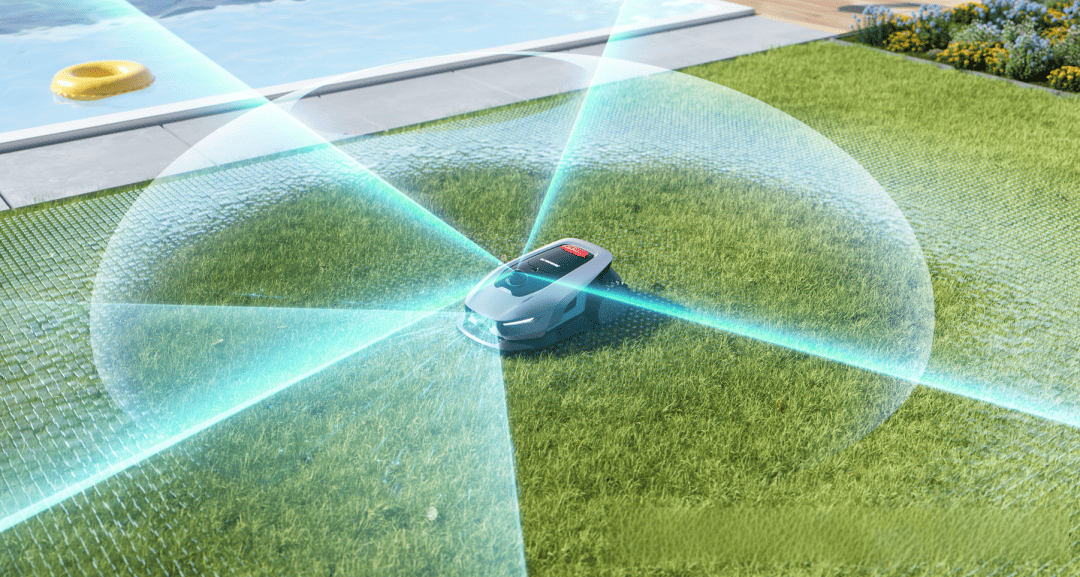The advent of the autonomous lawn mower has transformed residential and commercial landscaping, shifting from a labor-intensive task to a fully automated process. Early robotic mowers relied on random patterns or simple boundary wires, often resulting in inefficient coverage and uneven results. The breakthrough for true precision and efficiency, however, has come from the integration of advanced positioning technologies, with the high-precision antenna serving as the critical sensory organ at the heart of the system. By leveraging sophisticated multi-feed designs and coupling with Real-Time Kinematic (RTK) technology, these antennas are enabling a new generation of unmanned mowers that navigate with centimeter-level accuracy, revolutionizing the standards of automated grounds maintenance.
The Core Technology: Demystifying the High-Precision Antenna
At its core, the function of a high-precision antenna in this context is to provide a stable, reliable, and exceptionally accurate geolocation data point for the mower's navigation system. This is a significant leap from the standard patch antennas used in conventional GPS devices.
• Multi-Feed Design and Phase Center Alignment: The key innovation lies in the multi-feed point design. Standard GPS antennas have a single feed point, which can lead to a phenomenon where the electrical phase center of the antenna—the virtual point from which it receives signals—shifts slightly depending on the angle and elevation of the incoming satellite signals. This instability introduces small but critical errors in the reported position. High-precision antennas are meticulously engineered with multiple, strategically placed feed points. Sophisticated internal circuitry or firmware combines these signals to create a single, highly stable output. The primary goal is to align the phase center with the antenna's physical geometric center. This calibration minimizes "phase center variation," a major source of positional error. By anchoring the measurement point to a known, fixed geometric center, the system can calculate its location with unprecedented consistency, forming the foundation for millimeter-level positioning accuracy in ideal conditions.
• Mitigating Environmental Challenges: Lawn mowing environments are rife with signal-degrading challenges, including multipath interference. This occurs when GPS signals bounce off nearby structures, trees, or the ground before reaching the antenna, confusing the receiver about the true signal path. High-precision antennas combat this with a combination of:
The System in Action: RTK and the High-Precision Antenna Synergy
The antenna's raw accuracy is supercharged by its integration with Real-Time Kinematic (RTK) technology. An RTK system consists of two units: the mower itself (the "rover") and a fixed base station, which can be a local unit installed on the property or a signal from a regional correction network.
• The Base Station's Role: The base station, equipped with its own high-precision antenna, is placed at a known, fixed coordinate. It calculates the difference between its precisely known location and the location calculated from the raw satellite signals it receives. This difference is the "error" or "correction" factor.
• Real-Time Correction: The base station broadcasts this stream of correction data to the unmanned mower via a radio link (e.g., 4G/LTE or a private radio frequency). The mower's onboard RTK receiver applies these corrections to its own raw GPS data in real-time. This process resolves the ambiguities in the carrier-phase of the satellite signal, allowing it to determine its position relative to the base station with centimeter-level accuracy.
The high-precision antenna on the mower is fundamental to this process. Its stable phase center ensures that the rover is measuring the carrier-phase from a consistent reference point, allowing the RTK algorithm to "lock on" and maintain a "fixed" solution reliably. Without this antenna stability, the system would frequently drop into a lower-accuracy "float" solution, defeating the purpose of RTK.
Operational Benefits: From Technical Specs to Flawless Lawns
The combination of a high-precision antenna and RTK technology translates into direct, tangible benefits for the performance of unmanned lawn mowers:
• Precise Path Following and Elimination of Over/Under-Cutting: The system allows the mower to follow a pre-programmed, optimized mowing route with centimeter-level fidelity. This methodical "lawnmower" or "striping" pattern ensures that every inch of grass is cut exactly once. It completely avoids missed areas and duplicate cuts, which were common drawbacks of random-path navigation. This not only results in a more uniform and aesthetically pleasing lawn but also promotes healthier grass growth.
• Enhanced Mowing Efficiency and Operational Optimization: By following an efficient, pre-planned path, the mower eliminates the wasted energy and time associated with random movement and overlapping passes. It can complete the mowing task in a shorter timeframe or cover a larger area on a single battery charge. Fleet managers for golf courses or large estates can use this data to optimize the routes of multiple mowers simultaneously, maximizing productivity.
• Advanced Functionality and Obstacle Avoidance: With its exact location always known, the mower can be programmed for complex behaviors. It can create intricate patterns, meticulously mow around delicate garden beds or trees (defined as geofenced "no-go" zones in its digital map), and automatically return to its docking station with pinpoint accuracy. Furthermore, when fused with data from other sensors like LiDAR or cameras, the highly accurate positional context provided by the antenna enhances the mower's ability to detect and navigate around dynamic obstacles like toys or people.
Conclusion
The high-precision antenna is far more than a simple component; it is the cornerstone of high-performance autonomous navigation for unmanned lawn mowers. Its advanced multi-feed design, which stabilizes the phase center, provides the foundational data integrity required to leverage the power of RTK correction. This synergy transforms the mower from a simple automated device into an intelligent, efficient, and precise landscaping tool. As this technology continues to become more accessible, it will set a new benchmark for quality and reliability in the autonomous outdoor equipment industry, ensuring that perfectly manicured lawns are no longer a matter of chance, but of precise, satellite-guided calculation.
